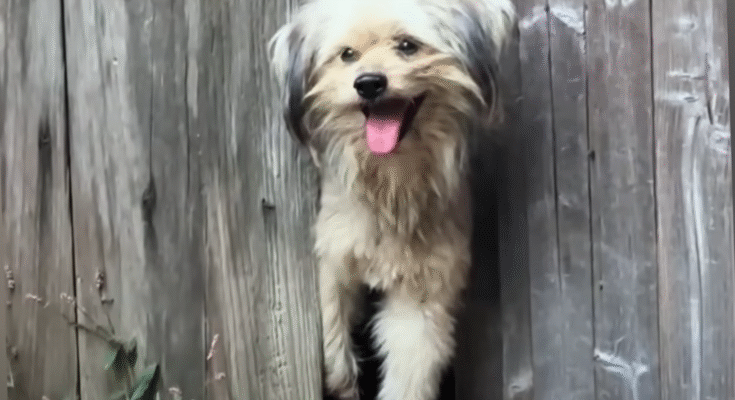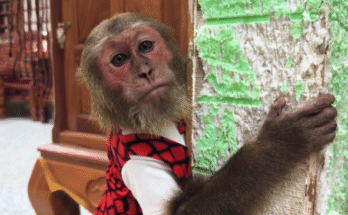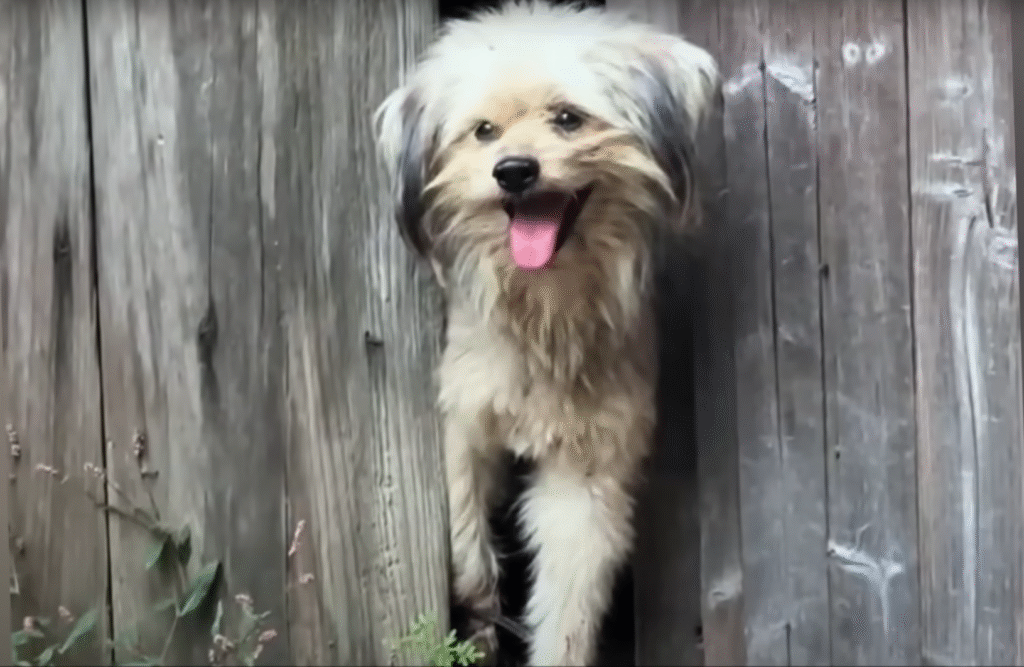
It was a bitterly cold morning, the kind where the wind cuts through layers of clothing and leaves every exposed skin raw. I had been patrolling the outskirts of the forest, checking for strays and abandoned animals, when I heard it — a faint, pitiful cry that barely carried over the wind. At first, I thought it was the cry of a bird caught in a bramble, or perhaps the wind itself playing tricks. But then, there it was again: a desperate, human-like plea, “Save me…”
I followed the sound, heart pounding, careful not to scare whatever creature was trapped. The cry led me to a narrow clearing, overgrown with brambles and fallen branches. That’s when I saw him.
He was a dog, though it took me a moment to process the state he was in. His front paw was caught in a cruel steel trap, rusty and sharp-edged, digging painfully into his flesh. His fur was matted and dirty, streaked with dried blood, and his eyes, wide with terror, met mine as I approached. For two long months, this poor creature had been trapped, abandoned, and left to suffer, hidden from the world that had turned its back.
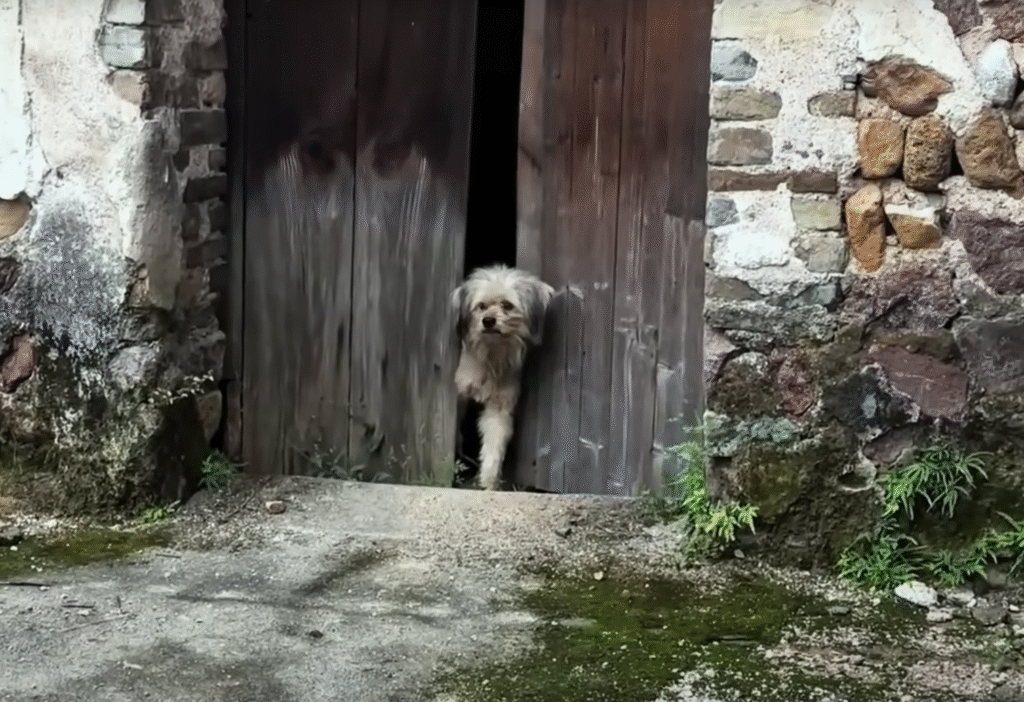
The sight was gut-wrenching. He tried to pull away, yelping in pain, but the trap held him fast. His fur bristled, teeth bared, trembling with fear and exhaustion. The raw intensity of his suffering was overwhelming. His cries echoed through the forest, a haunting melody of desperation and helplessness. “Save me! Please!” he howled, his voice a blend of pain, anger, and unbroken spirit.
I knelt down carefully, speaking in a soft, soothing voice. “I’m here. I won’t hurt you. I’m going to help, I promise.” But he did not move closer. Fear had taken root so deeply that even the gentlest promise of rescue was met with suspicion. His entire body was taut with tension, trembling with a combination of pain, hunger, and hopelessness.
It took all my patience to inch closer, removing branches and debris from around him. The trap had eaten into his paw, inflamed and infected, and his body was weak from malnutrition. I could see the rough patches of skin where the trap had rubbed, raw and bleeding. The pain had been relentless, unyielding, and merciless. Yet, in spite of it all, he had survived.
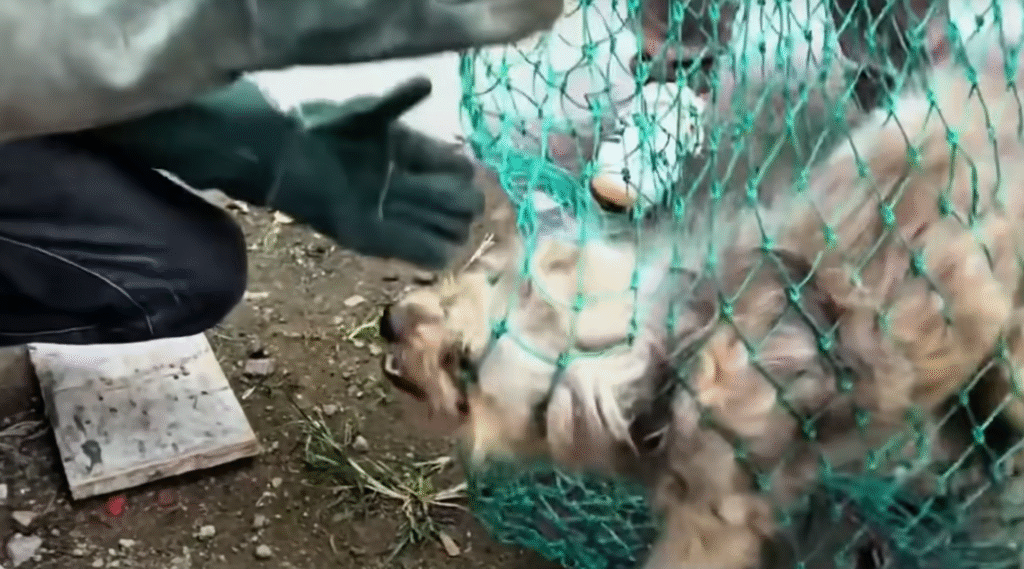
I produced a small piece of food from my bag, setting it on the ground a few feet away. He eyed it warily, his body coiled, ready to flee if necessary. Hunger had been another constant companion for two months, each meal likely a scavenged scrap, yet he still lacked the courage to trust. Slowly, cautiously, he edged forward, devouring the food in small, trembling bites. I could see the spark of life reigniting in him, faint but unmistakable.
The first step in rescuing him was to free him from the trap. I spoke softly, moving slowly, so as not to startle him further. With careful precision, I pried the trap open, murmuring reassurances the entire time. His paw bled and throbbed, and as soon as it was free, he collapsed in relief and exhaustion, trembling violently. Then, he broke down.
Tears, or perhaps tears that only a dog could shed, ran down his dirty face as he whimpered, shaking uncontrollably. His cries were no longer just of pain, but of relief, of surrender, of uncontainable emotion finally released. “Save me! Save me!” seemed to echo in every shuddering sob. I knelt beside him, letting him rest his head on my lap, stroking his matted fur, whispering calm, soothing words.
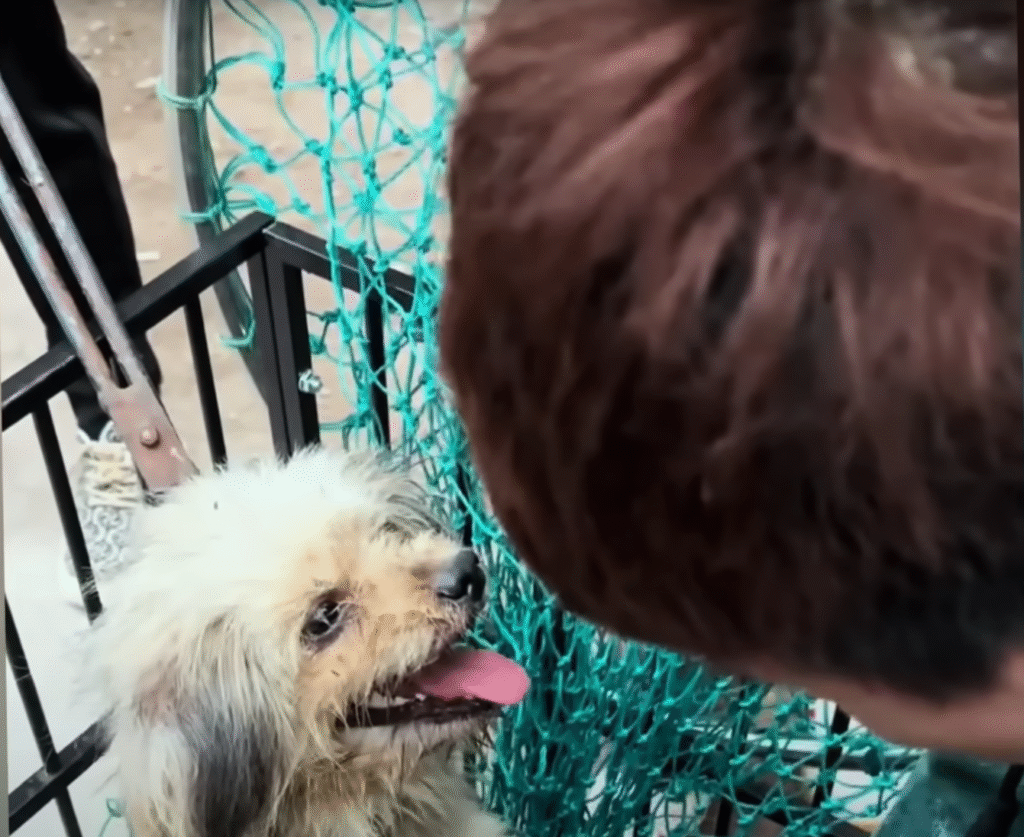
Transporting him was another challenge. He was weak, wary, and in tremendous pain. Each movement needed to be slow, deliberate, so as not to cause further injury or fear. When we finally reached the shelter, his cries had softened into quiet whimpers, his body trembling as the first flickers of trust began to emerge.
The veterinarian immediately examined him, grimly shaking his head at the severity of the wounds. Infection had set in, the tissue around the trap was damaged, and his paw would require careful cleaning, antibiotics, and weeks of recovery. His ribs were visible beneath his matted fur — malnutrition had left him frail and weak. Yet, despite everything, his spirit had not been entirely broken.
The first few days were the hardest. Every sudden movement, every loud noise, triggered panic. He flinched at the touch of hands, at the clatter of bowls, at the slightest disturbance in the shelter. He had learned, in two months of unrelenting suffering, that the world was dangerous, and he clung to fear like a lifeline. But slowly, patiently, he began to adjust. Small victories — eating from a bowl without hesitation, wagging a tail for the first time, allowing a gentle hand on his back — marked the beginnings of healing.
Over time, he learned to trust again. The cries of “Save me!” faded, replaced by soft whines and gentle nudges seeking affection. The shelter staff named him Chance, a fitting title for a dog who had endured so much and survived. His fur was carefully cleaned and groomed, revealing a strong, handsome dog beneath the dirt and scars. His eyes, once haunted by fear and despair, now held a light, a glimmer of hope, a reflection of the love and care he was finally allowed to experience.
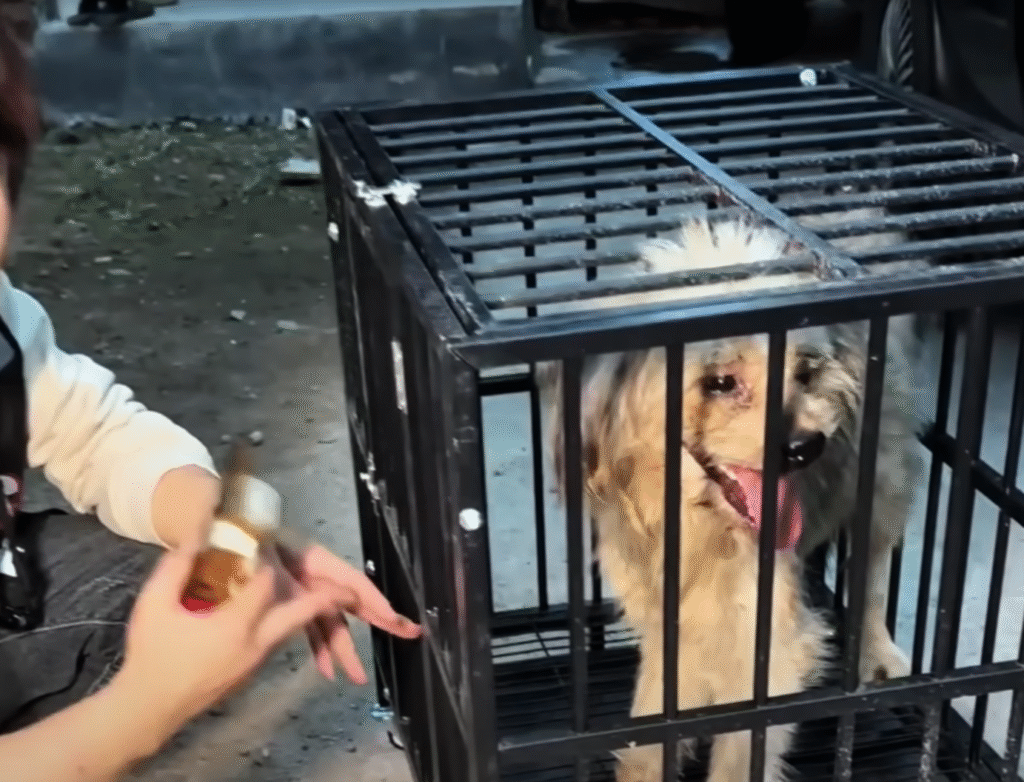
The transformation was astonishing. Chance learned to play, to run freely without fear, to sleep without trembling. He would nuzzle hands seeking affection, respond to his name with eager energy, and greet every day with curiosity rather than terror. He had been tortured, trapped, abandoned, and broken, yet love and patience rekindled the essence of who he was meant to be.
When a family eventually came to adopt him, it was a moment of triumph. They marveled at his gentle nature, his soft demeanor, and the resilience that shone through his every movement. Chance had gone from a terrified, broken dog begging for rescue to a joyful companion with the capacity to love and be loved fully.
Reflecting on that day in the forest, I often remember the sound of his cries, “Save me! Save me!” They were not just cries of pain but of hope — the enduring, unspoken will to survive, to reach for something better, and to trust, even after so much betrayal and suffering. Chance’s story is a testament to resilience, the power of compassion, and the belief that no matter how dark a past may be, there is always the possibility of transformation.
In the end, he had been tortured for two months, trapped and alone, yet he survived. He cried, he healed, he trusted, and he learned to love. Chance reminded all who knew him that even in the deepest suffering, hope can emerge, and with patience and care, lives broken by cruelty can be restored.
From trembling under a trap to basking in the warmth of a loving home, Chance’s journey is proof that rescue is not just about saving a life — it is about restoring a soul. The echoes of his first desperate cries, once haunting and raw, now remind us of the enduring strength of the heart and the extraordinary power of compassion.
